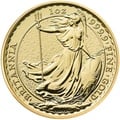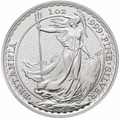Coin values
It will come as no surprise that there are a vast number of coins in existence, and finding their value is likely beyond any single place or database. The precious metal coins sold by a company such as ourselves even change in value every two minutes, making it even more complicated to track. As with many collectable items in life, it's true value is what someone is willing to pay for it.
Coins date back thousands of years, first appearing in the 6th century BC, and identifying and working out a coin’s value is a complex process. Understanding and explaining their history is therefore a major field of study, broadly termed numismatics.
Coin values can be affected by many factors, as discussed below. This value can be objective, in terms of metal value, or subjective, in terms of aesthetics and collectability.
A coin made of gold or silver will inevitably have an intrinsic value. There may however be valuable coins to be found amongst the change in your pocket. For example, the Kew Gardens 50p coin can sell for much higher than its intended value, or base metal content.

The Kew Gardens coin is the rarest 50p in common circulation.
Currently, the world's most valuable coin is the United States 1794/1795 ‘Flowing Hair’ silver-copper Dollar. This particular coin was sold in auction for over £7 million.
Old coin value
Working out the value of an old coin is not always simple. Correctly identifying a coin is the obvious first step in any valuation. There are numerous guides, books, pricing guides and web pages about coin collecting. These should provide enough to broadly identify any coin, and a quick search of the text found on a coin should give a good starting point. Older coins can be more difficult to identify; hammered coin identification in particular can prove difficult, but the internet is a great place to start.
Once identified, what makes a coin valuable? There are generally four characteristics that make coins more valuable than their currency or face value; these are metal content, collectability, condition, and rarity.
Metal content
Any coins minted from a precious metal will at the very least have worth from the metal they’re made of. This means
gold,
silver,
platinum
and
palladium coins
can always be bought with confidence in their basic intrinsic coin value.
Collectability
Collectability is something of a subjective factor, and one that can be made up of the other characteristics mentioned.
Some coins are more pleasing to the eye than others, and are consequently more collectable. The UK Sovereign for example, with its classic reverse design by Benedetto Pistrucci is widely acknowledged to be a beautiful coin. Likewise, the Austrian Mint's Maria Theresa silver Thaler is another coin made more collectible simply because of its widely admired appearance.
Historic significance can also add to the collectible value of coins. Many commemorative coins have been struck to mark significant events. These include common currency coins and precious metal versions. UK 50p and £2 common currency coins are often issued to mark significant national events.
Some numismatics build their collections around specific themes. The historic significance of events may therefore considerably add to the value of a coin.
Condition
The condition of a coin is the second most important factor in the value of a coin. Mints can go to extraordinary lengths to produce high quality special editions for the collectors’ market. These are often then sealed and remain untouched to preserve their quality.
Even some fine mint state examples of common currency coins can command high prices, and many collectors send to their coins for grading to certify their condition.
Rarity
The most decisive factor contributing to a coin's value is its rarity.
Rarity can be deliberately created; as happens with limited editions, which have low mintage numbers designed to increase scarcity. An example of this is the 2007 £2 Gold Abolition of Slave Trade Coin. Only 1,000 were minted to mark the 200th anniversary of the Abolition of the Slave Trade within the British Empire.
Rarity can also be created by mistake; as with minting errors, or when coins have been issued by mistake. An example of this is the
Edward VIII gold Sovereign.
All these coins should have been destroyed following the king's abdication, but a few test proofs and pattern coins survived. In 2020 one of these became the first UK coin to sell for over a million pounds.
The record-breaking Edward VIII Sovereign recently sold at auction for £1 million, as seen on the Royal Mint Twitter account. It’s extremely high value comes from both its scarcity and its historic significance.
Rarity also occurs because of wastage through ageing. Even coins which were originally issued in millions gradually wear down, are lost and can therefore become rare.
Rarity, condition, collectibility and metal content can increase the value of a coin. By contrast poor condition and high mintage quantities can significantly reduce the value of a coin.
Value of old British coins
Old British coins can benefit from these factors, they have a rich history spanning hundreds of years covering famous monarchs like Henry VIII and Queen Victoria.
Regardless of condition, BullionByPost will buy precious metal coins based on their market value. We also sell a huge range of precious metal bullion coins, including some valuable, rare
collectable coins.
- How To Buy Gold
- How to Buy?
- Payment Options
- Delivery Options
- Gold Storage
- Storage at Brink's
- Gold Investment Guide
- Why buy gold?
- Is gold a good investment?
- Why physical gold?
- Best time to buy gold?
- Gold bars vs coins?
- Gold vs Silver
- Gold - Silver Ratio explained
- VAT on bullion
- CGT on bullion
- Legal tender coins
- Top 5 Gold Investments
- Top 5 Silver Investments
- Gold vs ISAs
- Gold vs Buy-to-Let
- Gold vs FTSE 100
- Gold vs Bitcoin
- Where to buy gold?
- Why buy from us?
- Where to sell gold?
- Coin Shops
- Gold Price Forecasts
- Top 10 Gold Producers
- Top 10 Gold Reserves
- Gold Britannia vs Sovereign
- Britannia coin designs
- Sovereign coin designs
- Sovereign Mintages
- Sovereign mint marks
- British coin specs
- What is a proof coin?
- Royal Mint bullion
- The Queen's Beasts
- Royal Mint Lunar Coins
- Bullion Refiners
- British coin mints
- Krugerrands
- Gold Tola - India & Pakistan
- Bullion Index









